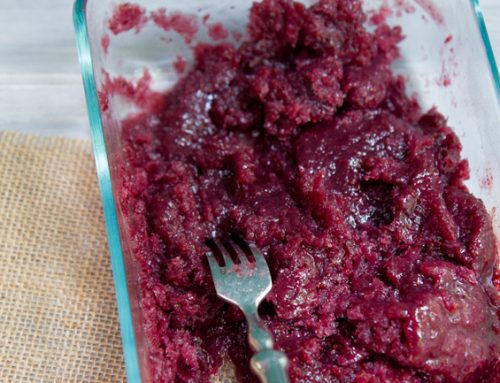Do you prefer ketchup, mustard or mayonnaise? Always or only with certain foods? Does brand matter? Do you make your own?
Lucas, who is 9, and I stopped by Rendezvous Bistro a few days ago for oysters and frites. We love Rendezvous, in part, because we can take Joey, my 10-year-old dachshund, with us; he is allowed on the patio, which is heated in cool weather. We also like the happy-hour oysters, though they’ve increased from $1 to $1.50, which means we got a dozen instead of two dozen.
Lucas is a great meal companion. With his natural curiosity, phenomenal memory and great palate, he always has been. He holds his own around a platter of oysters and his appetite for sushi is impressive. By the time he was 18 months old, he was stealing hamachi off my plate.
“I remember when I ate my first oyster,” he said, as our platter of shellfish arrived. On and on he went, with the details of Thanksgiving dinner when he was four or five.
When our fries arrived, we got to talking about ketchup, mayonnaise and aioli.
Lucas loves ketchup. It’s what he wants on a hot dog, he likes it on scrambled eggs and it’s essential with French fries. I shudder and think of my first school lunch, when I was in kindergarten: A hot dog, with mustard and ketchup. I started to cry and someone, probably a sixth-grader who was a cafeteria monitor, took pity on me and exchanged my condiment-tainted hot dog for a neat one, nothing but the warm bun and the hot dog itself. Eventually, I added mustard but never ever ketchup.
When it comes to frites, I prefer French style: Aioli, not ketchup. In Brussels, that’s what you get when you order “frites avec sauce.” In a pinch, I’ve been known to dip a fry or two in mayonnaise. When the frites are made with sweet potatoes, mustard is the condiment of choice, for both of us. Lucas loved D’s Diner in Sebastopol when he was a toddler, especially the sweet potato fries and honey mustard. He caught on to the whole dipping ritual instantly.
So there we sat at Rendezvous, dipping our fries in our chosen condiments, letting Joey have a nibble now and then and chatting. At one point, Lucas tried a fry dipped in both aioli and ketchup. “I like how the aioli makes the ketchup taste,” he said, underscoring his willingness to revise his view of all things, including food. I dipped a fry in ketchup and suddenly, there I was at the Carousel diner with Carol, sipping a vanilla coke and waiting for the yellow ’64 to cruise by. I may prefer aioli now but as a kid, I dipped every fry in ketchup and today the taste is a time machine.
When it comes to mayonnaise, we both agree: It is essential on a BLT.
What’s your preference? Are you willing to buck the scorn of the waiter by ordering mayonnaise on your pastrami sandwich at Katz’s Deli in New York? Do you say “hold the mayo” when you order a BLT? Do you have a secret passion for French’s mustard? How do you prefer your frites?
Basic Homemade Mayonnaise from the Seasonal Pantry Archives
Mayonnaise is the classic cold emulsion, a mother recipe upon which many sauces are built. The formula is simple: a large quantity of oil is suspended in a small amount of liquid, with an egg yolk’s lecithin serving as the emulsifier that keeps the sauce stable. If you add oil slowly, you will make a successful sauce. The flavor depends upon the ingredients themselves. Use excellent eggs from a local farmer and a mild olive oil, such as a late harvest oil from either California or Liguria, in northern Italy, which are sweeter and less bitter than others. Some chefs recommend neutral oil such as canola or grape seed, but olive oil is more environmentally friendly and better for human health, as well. Canola, grape seed and other refined oils require hexene to extract them from their source material; the hexene is released into the atmosphere after production. Extra virgin olive oil is extracted mechanically, not chemically.
- 1 large egg yolk
- Generous pinch kosher salt, plus more as needed
- Black pepper in a mill
- 1 teaspoon fresh lemon juice, plus more to taste
- 1 cup extra virgin olive oil, preferably a late harvest variety
- 1 tablespoon boiling water
- Put the egg yolk in a medium glass, stainless steel, or ceramic mixing bowl. Whisk in the salt, several turns of black pepper and the lemon juice.
- Slowly begin to whisk in the oil, a drop or two at a time. As the emulsion forms, you can add a bit more oil each time. Continue whisking as the sauce thickens and increases in volume.
- When all of the oil has been incorporated, taste the mayonnaise. If it needs more salt, dissolve a generous pinch in the boiling water and whisk the water into the mayonnaise. If you prefer more tartness, whisk in a squeeze of lemon juice before adding the boiling water.
- Cover the mayonnaise with plastic wrap and refrigerate for at least one hour before using. The sauce will keep, properly chilled, for 2 to 3 days.


